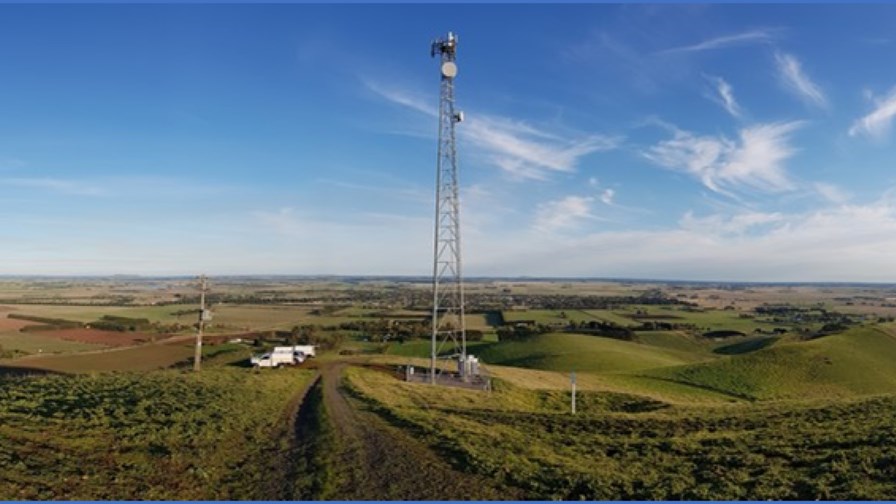
Vertical infrastructure: Source NBN
- With FWA it’s all about the grind of steady tech improvement and optimizations
- And, not to be underestimated, obstructive regulation clearance
- Speeds are always improving, but distances are important too
If there’s any territory or topography from around the world that suits Fixed Wireless Access (FWA) it has to be the Australian outback. While the population in ‘rural and regional’ Australia (as it prefers to call itself) tends to be sparse for obvious reasons, it does have advantages. Much of Australia is relatively flat and that’s important for the line-of-sight ‘vertical’ infrastructure required to support ever faster radio broadband over ever greater distances (see illustration above) to meet the growing communication needs of rural communities.
To meet these needs Australia has its nbn (National Broadband Network) which is tasked to keep evolving and improving Australia’s broadband reach - connecting more communities using ever-improving technologies at ever-greater speeds as opportunity arises and budgets allow.
The last year or so has seen much R&D focus on radio - especially with the current scramble to find use cases for 5G, so the nbn has been working with Ericsson, Qualcomm and Casa Systems on improved and stable 5G mmWave transmission of close to 1Gbps at a distance of 7.3km, double the distance recorded at its experimental site at Mortlake, Victoria, just three months ago and a new record globally it claims (other, similar claims of mmWave improvement were made last year by Italy’s TIM).
Whoever got there first is immaterial (they’re using the same partners after all), what’s clear is that rapid progress is being made with 4G/5G for FWA and nbn anticipates ongoing testing to demonstrate even longer range capability in the future.
nbn currently invests around $200 million annually on the fixed wireless network optimisation. Its next steps include engineering more carrier aggregation to improve load balancing across available spectrum and enhance single user data rates; the introduction of advanced antenna technologies such as multi-beam wideband antennas, Massive MIMO, multi-user MIMO and coordinated multipoint transmission to improve spectrum efficiency and reduce interference while driving down the cost per bit to accommodate greater traffic growth. Plus optimisation of end user radio conditions, actively balancing user profiles and reducing the average number of users per cell to achieve increased data rates. It says it currently serves around 19 users per cell, a reduction from historical levels of around 60.
Italy too has topographical and population sparsity problems that are being overcome (hopefully) by 5G technology. Last month Fastweb in Italy launched commercial 5G-based FWA, claiming to be one of the first European operators to do so. Its plans are certainly ambitious. It‘s aiming to eventually provide 5G mmWave connections to 12 million homes in Italy - nearly half of the population - with broadband speeds of up to 1 Gbps by 2024. It’s that old enemy, the digital divide again. FWA will make its household connections via a 5G CPE device mounted on the roof or side of the house connecting householders wirelessly to a nearby cell tower to provide ‘ultra-fast’ broadband services.
Meanwhile in the US, there’s a different approach to enabling more fixed wireless services. The FCC has adopted a rule so that wireless providers can serve mobile home parks, assisted living facilities and other locations where a single hub antenna serves multiple customers, without the provider running into trouble over “unreasonable barriers such as zoning laws, restrictive covenants and excessive permitting fees.”
This is demographic change in action. Telecoms still talks about households but seems to have a blind spot for domestic arrangements which fall outside of a conventional ‘household’ definition, despite the growth in these living arrangements.
Email Newsletters
Sign up to receive TelecomTV's top news and videos, plus exclusive subscriber-only content direct to your inbox.




